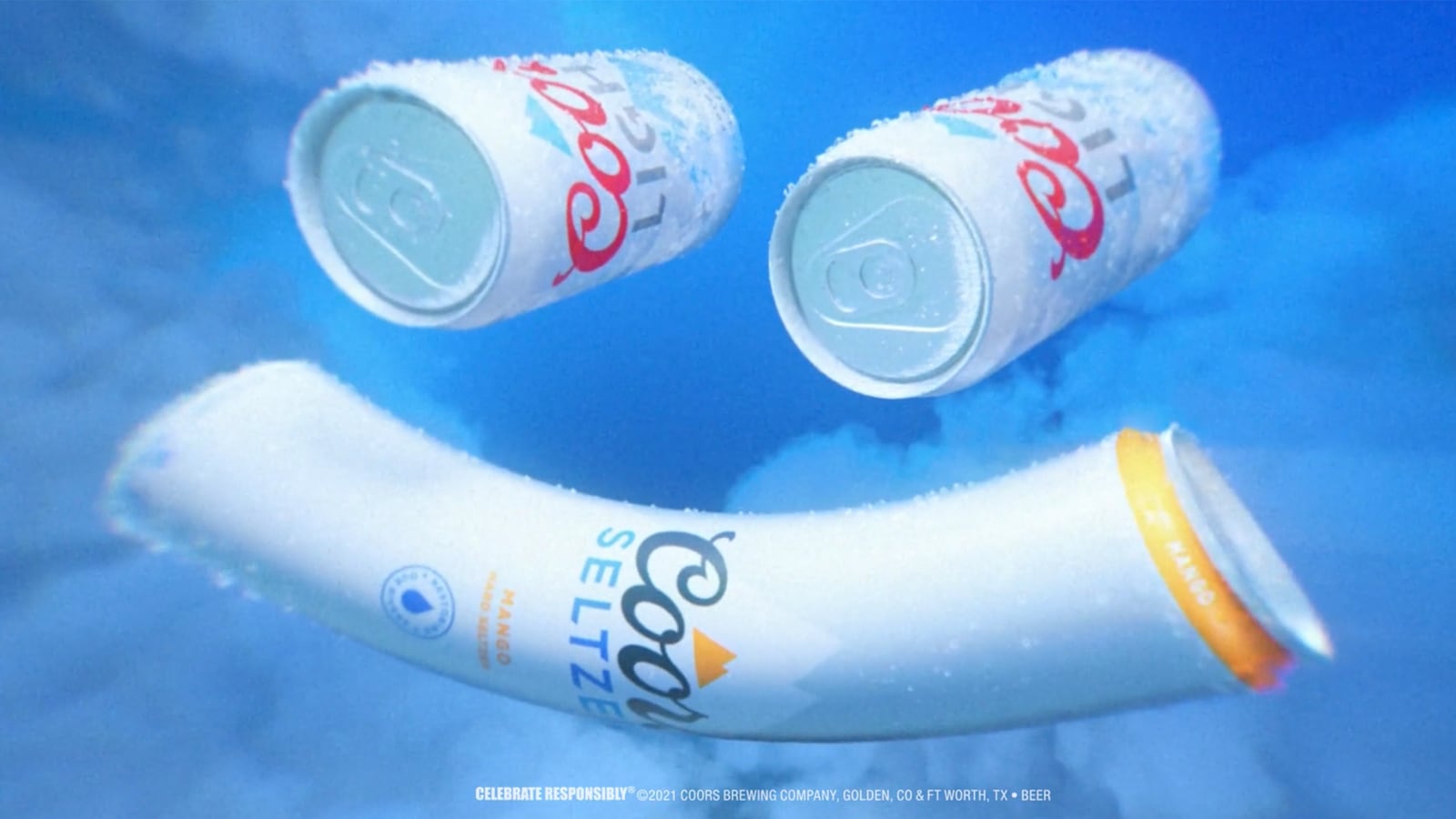In what seemed to be the first dystopian shots of the annual Super Bowl ad arms race, Dolly Parton announced last week that she had rewritten her working-class anthem “9 to 5” as “5 to 9” for a Squarespace commercial about, as Variety put it, “office workers getting their entrepreneurial side hustles going after hours.” (Sleeping is out; the gig economy is in!)
To this, Coors said—and I apologize in advance for this—hold my beer.
The next day, the Molson Coors Beverage Company announced an ad they’re calling the “Coors Big Game Dream” that uses something called “Targeted Dream Incubation” to play commercials in your dreams (assuming you get some). Under the consultation of psychologist Dr. Deirdre Barrett, the beer conglomerate designed a combination “stimulus film” and eight-hour soundscape that aims to “shape and compel your subconscious” into dreaming about two signature drinks. “COORS LIGHT AND COORS SELTZER ARE CREATING THE FIRST BIG GAME AD,” the press release yelled, “THAT RUNS IN YOUR DREAMS.”
In an equally jarring twist, Zayn Malik has become the campaign’s semi-spokesperson. On Saturday night at 10:30 p.m ET, Malik will livestream himself on Instagram watching the video, falling asleep, and then, ideally, dreaming for a solid eight hours. The same twisted minds that brought you the idea of “dream ads” also cooked up the pseudo-relatable marketing for this event: “So this sounds crazy,” the press announcement gushed (it does!), “but if you’ve ever wanted to sleep with Zayn Malik, now you can… Zayn, the man of our collective dreams, is going to let people WATCH him dream on Saturday night.”
For his part, Malik seems to have a fairly sober attitude about the whole thing. “Yo, everyone, Zayn here,” he said in an announcement video. “I’m going to be doing an experiment with Coors on Instagram. They’re going to see if they can put a commercial inside your dreams—which is kind of messed up.”
Technically, it’s not a Super Bowl ad, as Anheuser-Busch holds a monopoly over all ale-related advertising between kickoff and final score—hence, “Big Game.” (It will play before and after). And the ad isn’t quite Inception, Dr. Barrett said. The experiment is predicated on the subject opting in; they have to actively try to dream Coors, in other words, by conjuring mental pictures and repeating simple phrases. “There’s a lot of psychology research that is based around whether or not subliminal text gets into your mind at all,” Dr. Barrett said. “And the research tends to suggest that it gets in a little. But this sort of myth that it’s more powerful than if you simply showed it to somebody awake seems to be very false. It has less influence.”
For maximum effect, the viewer is supposed to watch the short film three times successively and fall asleep to the soundscape. The video itself looks like a low-budget children’s cartoon. The camera follows an elongated blue creature; it looks like a stick figure made out of one large bubble. The character swoops through an ice cave, and flies down into a valley between two capped peaks. Barrett’s description alone sounds like a fever dream. “It is a short computer-generated imagery dream film that contains a lot of the Coors brand imagery of Rocky Mountain scenes, streams, snow-capped mountains,” she said. “It’s a combination of pretty outdoor scenery and magical things. There’s a hybrid talking animal. A celebrity shows up at some point, but it’s kind of a fill-in-your-own celebrity. There’s a talking head made from three Coors beer cans and some slinky-like beer cans that pop up out of holes, but then go downstairs like a slinky does.”
Perhaps the best news about the ad is that it doesn’t seem to work very well. A spokesperson for Coors said that the film had been tested in January during a sleep study in Los Angeles. Eighteen subjects took part in the Coors-sponsored study, where fewer than one-third reported Coors-related dreams. “Participants watched a dream stimulus video and were woken during the REM cycle portion of their sleep to report on their dreams,” a spokesperson said. “Five of the 18 participants reported dreaming about Coors Light or Coors Seltzer.”
Twelve of them were paid actors.

